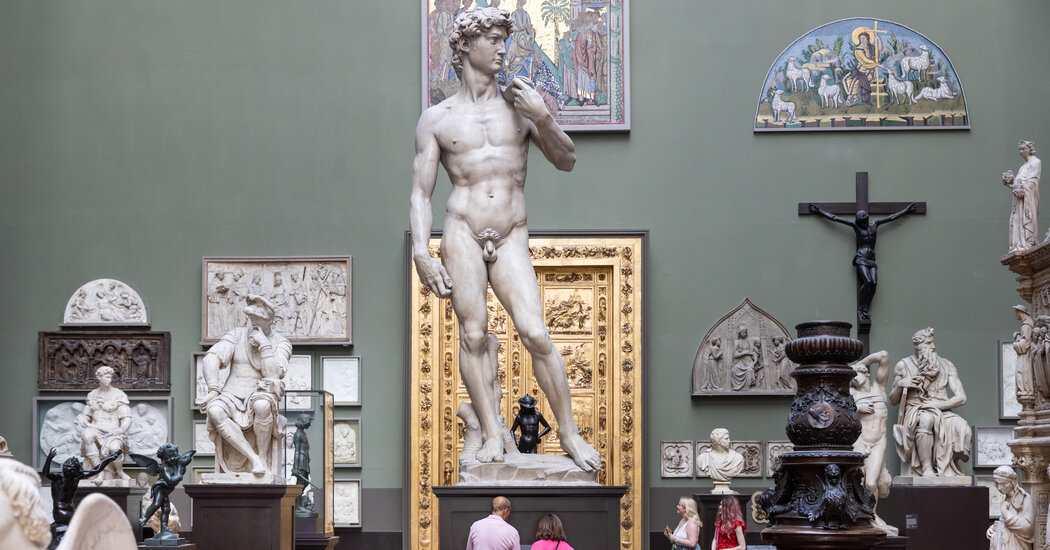Even for someone who loves getting lost in museums — especially “everything museums” like the Metropolitan Museum of Art in New York — London’s Victoria and Albert Museum might have been my Waterloo. The statistics are daunting: 5,000 years of artistic production with more than 60,000 works on view (from a collection of some 2.8 million) in about 150 galleries beneath 21 acres of roof.
The V&A typically draws around 3 million annual visitors, but even on the busiest days, the museum has the space and setup to largely avoid the sense of competing with the crowds. Since visiting the permanent collection is free (some exhibitions cost up to 20 pounds, or about $25), once you’re in the door you can just start wandering. Step right for medieval mosaics and Renaissance tapestries or go deep for 1940s Paris fashion, Baroque sculpture and, beyond that, Buddhist art.
It’s easy to spend an entire day in the V&A. Here’s a plan for making the most of your visit. But first a bit of background.
An eclectic treasure trove
If the British Museum is known as Britain’s attic — an abundance of artistic and cultural relics from the realm and around the globe — then the V&A is the country’s classroom. It, too, is a trove of exemplary works, from exquisite Raphael drawings to groovy 1970s plastic radios; Coptic tunics to Alexander McQueen couture gowns; vividly hued Islamic tiles to a bunch of grand English beds. These objects were displayed not just to delight connoisseurs, but to provide great art and ideas to educate British designers, manufacturers and workers in good taste and technical prowess.
The museum was the pet project of Prince Albert, consort to Queen Victoria, who had seen firsthand that British manufactured goods were not always top of the class. By displaying applied arts (textiles, ceramics, glass and other manufactured objects) alongside fine arts (architecture, painting and sculpture), the new museum would democratize aesthetic appreciation and inspire better designs for better products.
Originally known as the South Kensington Museum, the V&A opened in 1857 in temporary structures while new buildings were constructed. Incorporated into the new museum were libraries and schools for science and art, including one for women. The leading artists of the time, such as Frederic Leighton and William Morris, contributed to its décor. Such was its embrace of modernity, that the world’s first museum exhibition of photography (the medium was…
Click Here to Read the Full Original Article at NYT > Travel…
